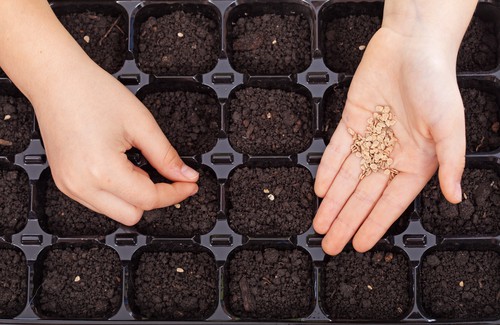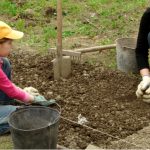Last updated on March 22nd, 2022
Our site is reader supported, this means we may earn a small commission from Amazon and other affiliates when you buy through links on our site.
As Valentine’s Day approaches, it’s time to start planting things like garlic, preparing your half-hardy annuals, and establishing a nest box if you want to attract birds to your garden.
Of course, there’s plenty more to do in the month of February. Don’t let the cold weather stop you from cutting back your ornamental grasses.
Top jobs to do in February
- Put up a nesting box to help local birds nest in spring.
- Plant garlic and start to chit seed potatoes if you have not already done so.
- Cut back grasses leaving any new green shoots.
- Start to sow seeds indoors for annuals, perennials and vegetables.
- Net fruit and vegetables to keep the birds off.
- If you have snowdrops you want to divide, do this now while they are in the green.
- Prune conservatory climbers such as Bougainvillaea.
- Prune Wisteria if you have not done already, cut back side shoots to 2 or 3 buds.
- Cut back Cornus that are grown for their red, orange or yellow stems in winter to the base.
- Prune summer-flowering clematis at the end of February just before new growth starts. Check out our clematis pruning guide here.
- Prepare seedbeds by covering the ground with fleece to warm the ground ready for planting in the next few months.
- Do a little weeding digging up perennial weeds including the root, try using a weed puller for larger amounts of weeds.
- Prune back winter flower jasmine after flowering – We have a guide here on how to do this.
- Prune back winter flowering shrubs after flowering, these include Mahonia and Viburnum x bodnantense.
- Continue deadheading spring flowers such as pansies and violas.
- Remove any deciduous trees that still need moving, time is running out so get it done if you need to.
- Watch out for leaf spot on Hellebores and cut back affected foliage.
- Prune redcurrants, gooseberries and blackcurrants if you have not already done so.
- Trim deciduous hedges now before the local birds start nesting in spring.
- Start to order plug plants, seeds, onion sets, agapanthus crowns and summer flowering bulbs before the season starts.
Putting up your Nest Box
When you put up your nest box in anticipation for your feathery friends, make sure you put it in a location away from strong winds and direct sunlight. You want it situated above the ground between 1 and 3 metres.
Check your garden for a large tree trunk available against which you can fix the nest box. If you don’t have a large tree trunk you can always make do with a wall or a shed. Wherever you put it, the goal is to make sure it is out of reach of neighbourhood squirrels and any cats.
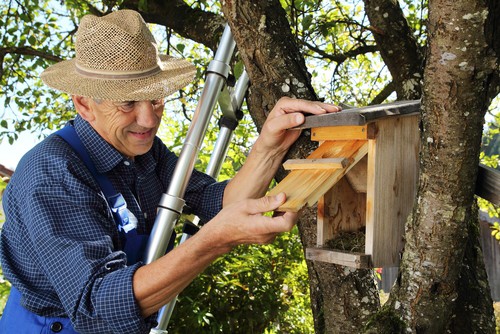
You should position the nest box away from any bird feeders because the whole point of the nest boxes to give birds a home in which to raise their families, and bird feeders tend to be very social busy areas.
Learn how to attract birds to a nest box in our guide here.
Learn more about attracting birds into your garden in our guide here.
Planting Garlic
If you are growing garlic outside this season, February is when you should put them in the ground. When you purchase a bulb, break it into its individual cloves. Put them in the ground with the pointed end facing upwards. You should plant them just deep enough that the tip is covered with soil. If growing multiple cloves of garlic, space them at least 15cm apart in rows approximately 30cm apart. Garlic prefers somewhere sunny and, like most plants, well-drained soil.
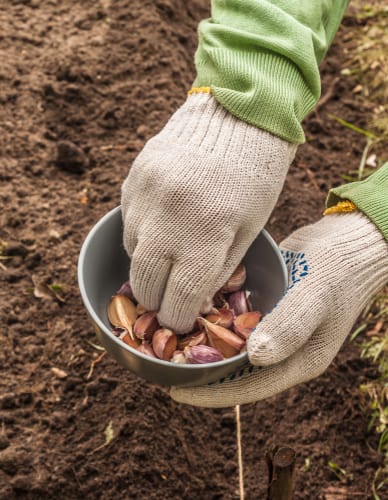
Learn more about how to plant garlic in our guide here.
Cut back Ornamental Grasses
Your ornamental grasses probably look beautiful all winter long but now it’s time to give them a haircut. The month of February brings untidiness to most ornamental grasses and you can cut them back to just above ground level with a sharp pair of gardening secateurs or scissors.
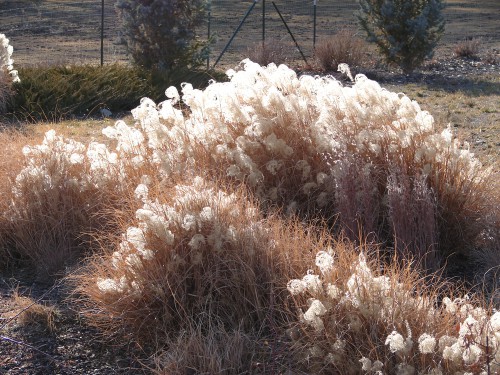
You don’t want to damage any of the green growth that you see sprouting from the base, but the rest of it can be done away with. If you have very large beds of plants you can reduce the amount of time stuck outdoors by using a hedge trimmer or large shears to simply cut the stems to where they are no more than 5-8cm above the ground.
After you cut them back, give them a bit of a boost by adding some fertiliser and mulch around the ground.
Prepare your Half Hardy Annuals
Now is the time to take your tender plants like begonias and start them off in seed form. Half-hardy annuals take a long time to grow so it’s good to start your seeds now. Always use compost for seed and cutting for this process, because seed compost is comprised of materials that help with moisture retention and reduce the risk of rot while not being too high in feed value.
Just because it’s slightly cold outside doesn’t mean you should ignore your garden. Now is the time to sow broad beans.
